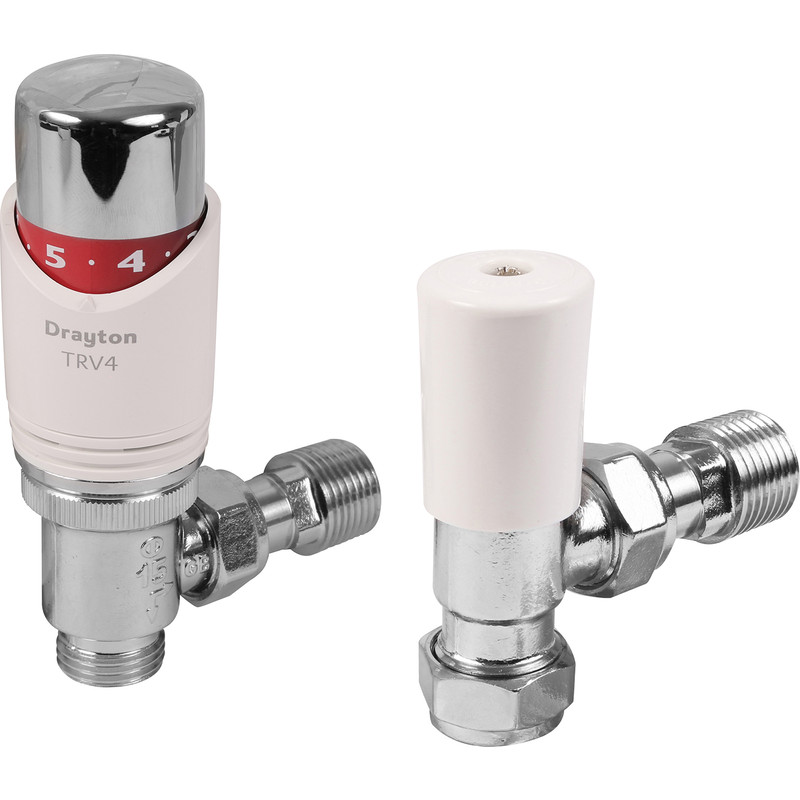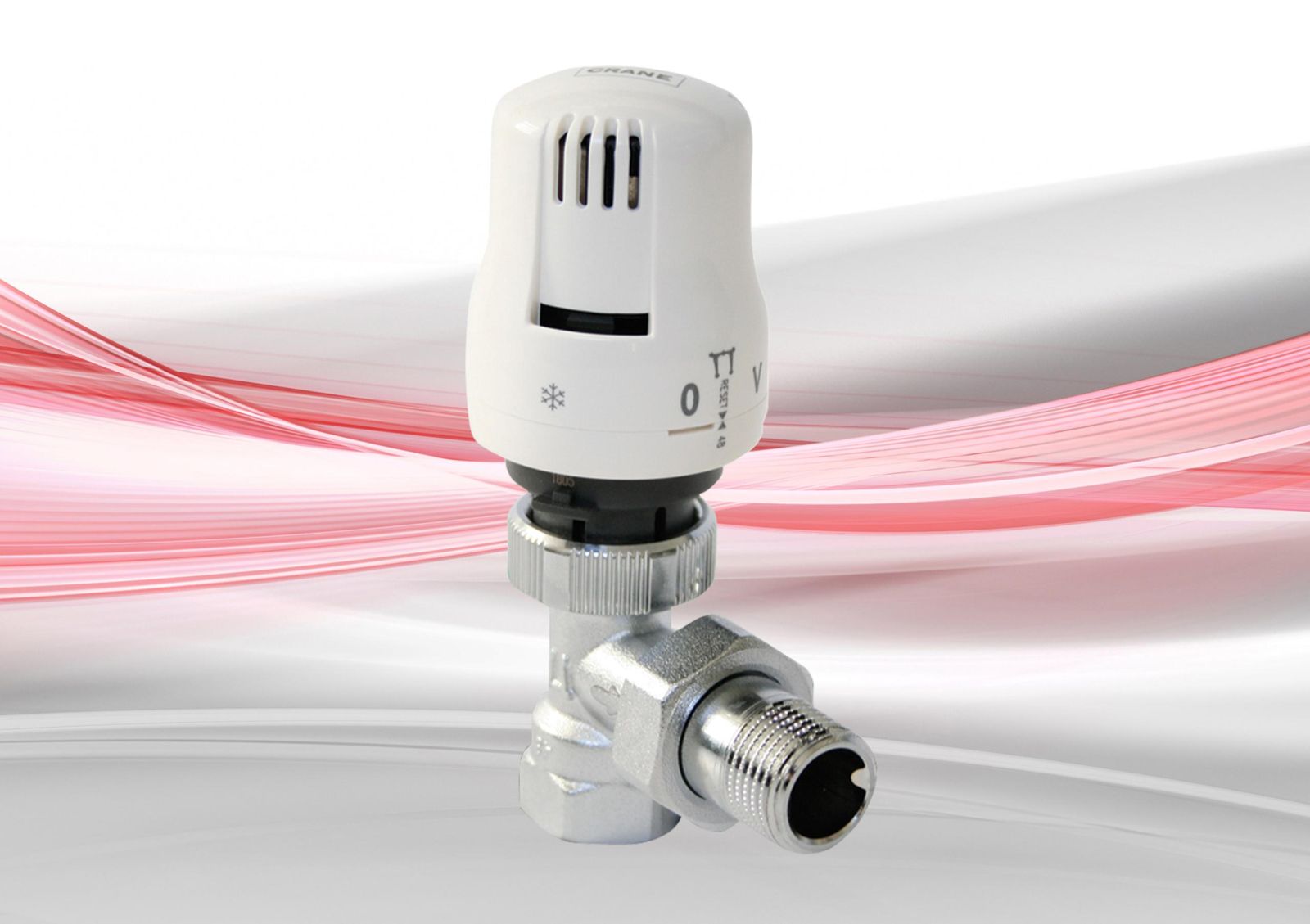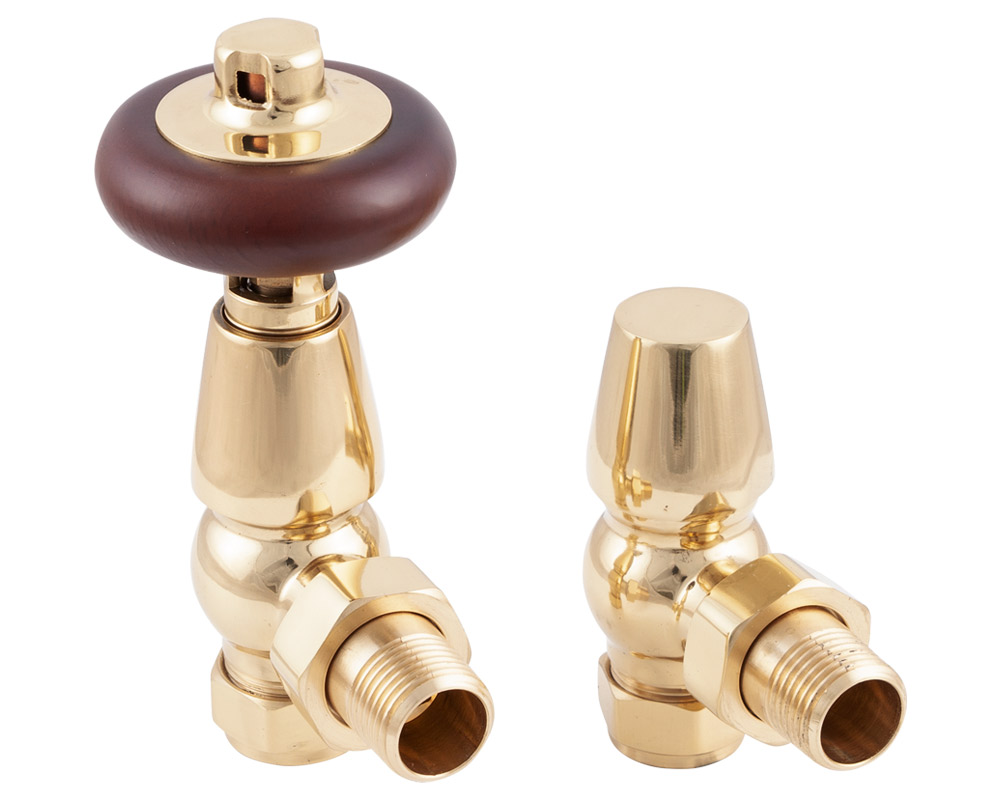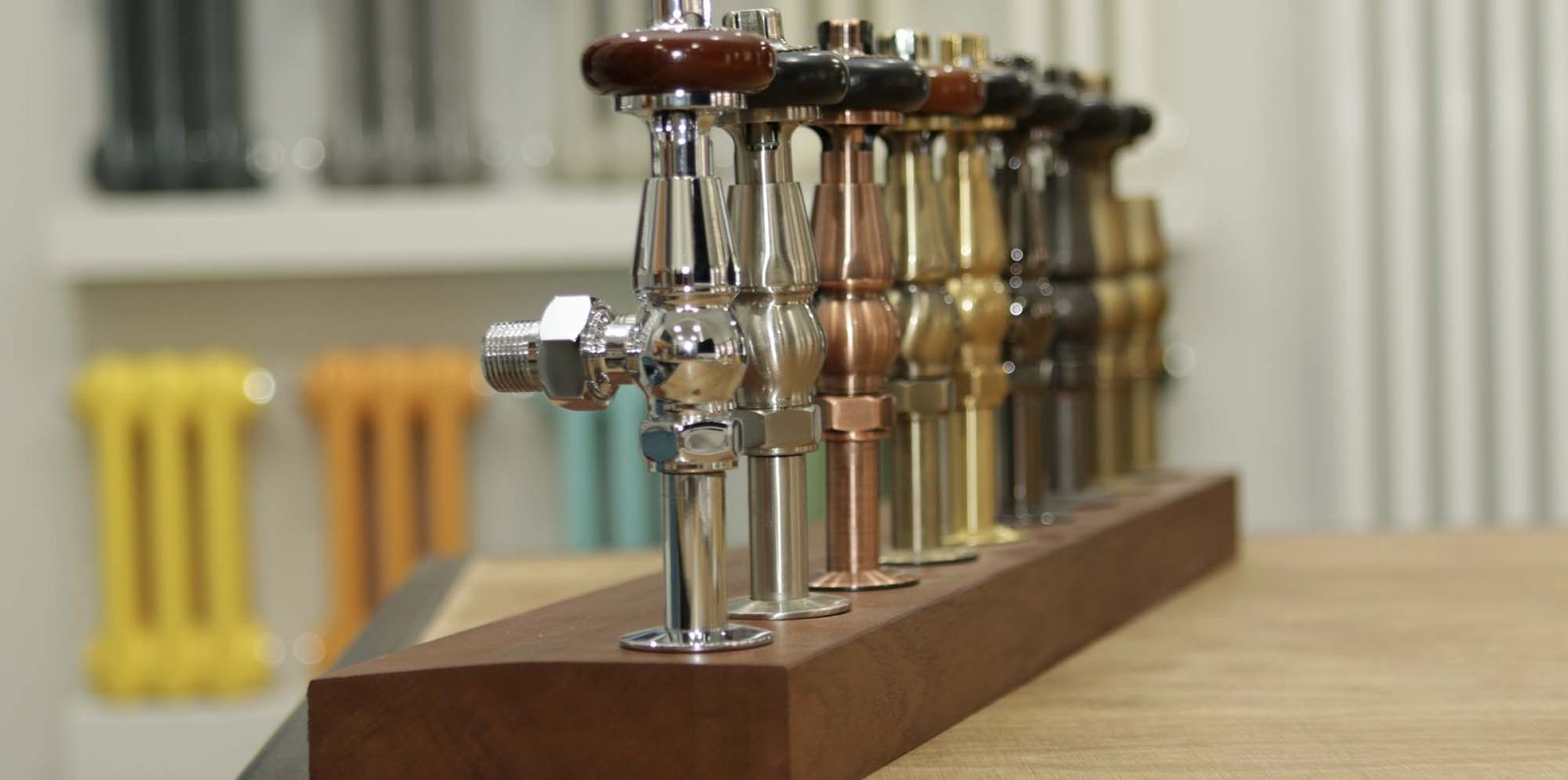Welcome to the ultimate guide on choosing the perfect radiator valve for both efficiency and style! Whether you're embarking on a home renovation project or simply looking to maximize the energy efficiency of your heating system, selecting the right radiator valve is essential. Don't worry, we've got you covered! In this comprehensive guide, we'll walk you through everything you need to know about radiator valves – from the different types and styles available to their functionality and benefits. We'll delve into the world of thermostatic and manual valves, exploring their pros and cons, and providing you with expert tips to make an informed decision based on your specific needs. Enhancing style and ensuring efficiency go hand in hand when it comes to radiator valves. We understand that aesthetics matter just as much as functionality, so we'll also help you discover valves that are not only efficient but also complement your interior design. Join us as we unlock the secrets of the ideal radiator valve, empowering you to heat your home effectively while adding a touch of style. Let's get started!

Importance of Radiator Valves in Heating Systems
Heating systems are the heart of any cozy living space. Among the components that play a crucial role in maintaining the desired temperature are radiator valves. These seemingly simple devices have a significant impact on the efficiency and comfort of your heating system.
Types of Radiator Valves
Radiators come in all shapes and sizes, and so do the valves that control them. There are two primary types of radiator valves, each with its own set of advantages:
Manual Radiator Valves
Manual radiator valves are the traditional choice for many heating systems. They allow you to manually control the flow of hot water to your radiators, giving you the freedom to adjust the temperature in each room independently. These valves are reliable and straightforward, making them a popular option.
Thermostatic Radiator Valves (TRVs)
Thermostatic radiator valves, on the other hand, offer a more advanced solution. These self-regulating valves automatically adjust the heat output based on the room's temperature. This not only ensures consistent comfort but also saves energy by preventing overheating. TRVs are a wise choice for those looking to optimize energy efficiency.

Manual Radiator Valves vs. Thermostatic Radiator Valves
Choosing between manual and thermostatic radiator valves depends on your specific needs. Let's weigh the pros and cons:
Manual Radiator Valves:
- Pros:
- Precise control over individual room temperatures.
- Affordable and durable.
- Cons:
- Requires manual adjustment, which can be less convenient.
- Limited energy savings potential.
Thermostatic Radiator Valves (TRVs):
- Pros:
- Automatic temperature regulation for each room.
- Energy-efficient, reducing heating costs.
- Cons:
- Initial investment may be higher.

Factors to Consider When Choosing Radiator Valves
Selecting the right radiator valves is essential for an effective heating system. Consider the following factors when making your decision:
1. Room Size
Larger rooms may benefit from TRVs, as they can efficiently maintain a consistent temperature. Smaller rooms may be adequately served by manual valves.
2. Usage Patterns
Consider how often and when each room is used. TRVs excel at adapting to changing schedules, while manual valves require regular adjustments.
3. Budget
Your budget will play a role in your choice. Manual valves are more affordable upfront, while TRVs offer long-term energy savings.
4. Aesthetic Preferences
Some homeowners prioritize the appearance of their radiators. Consider the style of valves that best complements your decor.
Energy Efficiency and Radiator Valves
Energy efficiency is a critical concern for both homeowners and businesses. Radiator valves, particularly thermostatic ones, can significantly impact your heating system's efficiency. By automatically adjusting heat output based on room temperature, TRVs help reduce energy waste and lower heating bills.
Furthermore, using energy-efficient radiator valves can contribute to a more sustainable future by decreasing carbon emissions associated with heating systems.

Radiator Valve Styles and Finishes
When it comes to radiator valves, functionality isn't the only consideration. The style and finish of the valves can have a significant impact on the overall aesthetics of your heating system. Explore the various styles and finishes available to match your decor:
Styles of Radiator Valves
-
Traditional Radiator Valves: These valves feature a classic design, often with crosshead or wheelhead handles, making them a great choice for period or vintage interiors.
-
Modern Radiator Valves: Sleek and minimalist, modern radiator valves are perfect for contemporary settings, offering a clean and unobtrusive appearance.
-
Designer Radiator Valves: For those seeking a touch of sophistication, designer valves come in various artistic and unique designs, turning your radiator into a stylish focal point.
Finishes for Radiator Valves
-
Chrome: Chrome-finished valves are highly popular, adding a reflective and polished look to your radiators.
-
Brushed Nickel: This finish offers a more subtle and muted appearance, ideal for a refined and understated decor.
-
Antique Brass: If you're aiming for a vintage or rustic feel, antique brass can provide an elegant touch to your heating system.
Popular Brands
Choosing the right brand for your radiator valves is vital for quality, reliability, and customer satisfaction. Here are some of the popular radiator valve brands known for their excellence:
-
Honeywell: Honeywell offers a range of reliable thermostatic radiator valves designed for energy efficiency and comfort.
-
Danfoss: Danfoss is a well-regarded brand with a wide selection of radiator valves, known for their precision and quality.
-
Myson: Myson provides a variety of traditional and modern radiator valves, often praised for their craftsmanship.
How to Install Radiator Valves
Proper installation is crucial to ensure the efficiency and performance of your radiator valves. Here's a step-by-step guide on how to install them:
-
Turn Off the Heating: Before installation, turn off your heating system to ensure safety and prevent hot water flow.
-
Drain the Radiator: Use a radiator key to bleed any air from the radiator and release any excess water into a container.
-
Remove the Old Valve: If replacing an existing valve, use a wrench to carefully remove it.
-
Prepare the New Valve: Apply plumber's tape to the threads of the new valve to prevent leaks.
-
Install the New Valve: Screw the new valve in place, making sure it's tight but not over-tightened.
-
Re-fill the Radiator: Open the valve and use a filling loop to top up the radiator with water, ensuring there are no leaks.
-
Check for Leaks: Inspect the newly installed valve for any signs of leakage and fix if necessary.
Maintenance and Troubleshooting for Radiator Valves
Radiator valves require occasional maintenance to ensure they function correctly. Here are some maintenance tips and troubleshooting steps:
- Regularly check for leaks or dripping from the valve.
- Lubricate valve spindles to keep them moving smoothly.
- If a radiator doesn't heat up or overheats, it may require adjustment or replacement.
Conclusion
In conclusion, radiator valves are essential components for both the functionality and aesthetics of your heating system. By understanding the styles, finishes, and top brands, you can select the right valves to match your decor and provide efficient temperature control. Proper installation, maintenance, and troubleshooting techniques will help you keep your heating system in top shape, ensuring a warm and comfortable living space year-round.
FAQ:
What Are the Valves on Radiators For?
Radiator valves serve two primary purposes:
-
Temperature Control: Radiator valves control the flow of hot water or steam into the radiator, allowing you to adjust the room's temperature. By opening or closing the valve, you can regulate how much heat is emitted from the radiator. This gives you individual control over the temperature in different rooms, promoting comfort and energy efficiency.
-
Isolation: Radiator valves also enable you to isolate or shut off specific radiators in your heating system. This can be useful when you want to perform maintenance, make repairs, or if a particular room doesn't need heating. By closing the valve, you prevent hot water from entering that specific radiator, effectively turning it off.
How Do You Know if a Radiator Valve is Open or Closed?
Determining whether a radiator valve is open or closed is usually straightforward. There are two common types of radiator valve handles:
-
Wheelhead Handle: Radiators with manual valves often have a wheelhead handle. When the valve is fully open, the handle points in line with the pipe. To close it, turn the handle clockwise (usually a quarter-turn) until it's perpendicular to the pipe.
-
Thermostatic Head: Thermostatic radiator valves (TRVs) have a thermostatic head with temperature settings. To open a TRV, set the desired temperature. To close it, lower the temperature setting to the minimum or "off" position.
Why Do Radiator Valves Fail?
Radiator valves can fail for various reasons, including:
-
Internal Blockage: Accumulation of debris or scale within the valve can obstruct its proper operation, leading to reduced or no flow.
-
Corrosion: Over time, corrosion can affect the valve's internal components, causing leaks or making it difficult to open and close.
-
Wear and Tear: Frequent use, especially with manual valves, can lead to wear on the valve's components, resulting in issues like leaks or difficulty in turning.
-
Improper Installation: Incorrect installation or overtightening of the valve can lead to leaks and other problems.
-
Age: Like any mechanical component, radiator valves can deteriorate with age and may eventually fail.
Which Side of the Radiator Controls Heat?
In most heating systems, the side of the radiator where the control valve (often the thermostatic radiator valve, or TRV) is installed controls the heat output. If the TRV is on the right side of the radiator, it means that the radiator will heat up when the room's temperature drops below the set level. Conversely, if the TRV is on the left side, the radiator will heat up when the room needs more warmth.
It's important to note that the location of the control valve can vary depending on the specific installation and plumbing configuration in your home, but in many cases, it's on the inlet side of the radiator.
